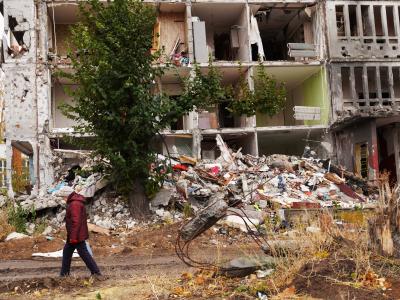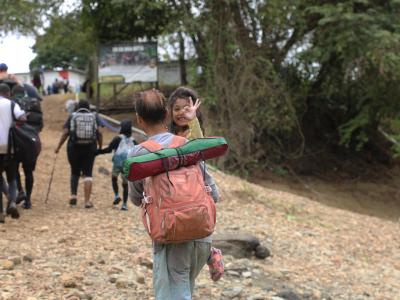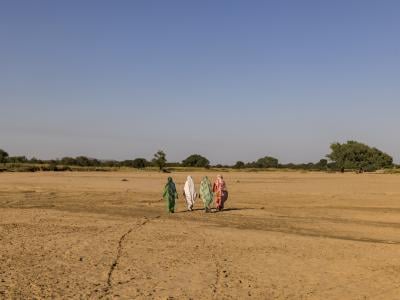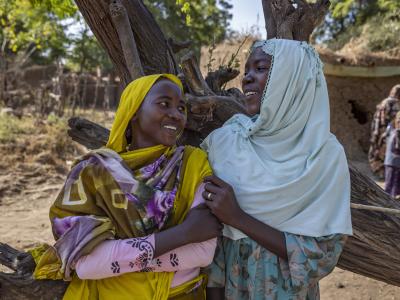Global financial needs amount to $1.203 billion (+12% vs 2024 current budget)
People who have been forced to flee are especially vulnerable to the devastating impacts of climate change. UNHCR aims to protect them, shrink its own carbon footprint, and make its humanitarian responses, such as water and shelter, more climate-resilient. Climate action will include investment in reforestation, solarization and clean cooking projects, adopting cleaner product specifications for relief items, reducing emissions from UNHCR offices, and anticipating climate-related hazards that may threaten forcibly displaced populations. In UNHCR’s 2025 budget, around $1.2 billion of planned expenditure is associated with climate action.
Spotlight examples

In Cameroon, the “Make Minawao green again” project aims to enhance resilience, regenerate degraded ecosystems and promote green energy for 120,000 refugees and 30,000 members of the host communities. This includes distributing 100,000 seedlings – especially to women, young people, the elderly and people with specific needs – improving access to reduced-emission energy for cooking, and training refugees and host community members on producing and using alternative sources of energy for cooking.

In Kenya, cash assistance will help refugees pay for the construction of permanent shelters in Kalobeyei with reinforced concrete and natural stone. Major infrastructure improvements, such as road upgrades and flood control structures, will support the development of an urbanized, sustainable settlement in Turkana County.

Together with the Government of the United Republic of Tanzania, the Green Climate Fund and UN Environment Programme, UNHCR will address climate challenges (such as flood and erosion control) in the refugee-hosting Kigoma region of the United Republic of Tanzania. UNHCR will conduct flood and erosion control activities within the camps and surrounding areas, and procure irrigation and water-harvesting equipment for host communities, to complement the existing green livelihoods activities and environmental restoration.
Financial overview
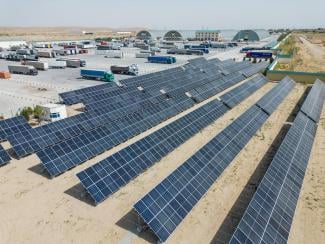

Solarization as humanitarian aid by LONGi and UNHCR
LONGi is partnering with UNHCR to solarize humanitarian facilities, starting with a pilot project at the Regional Humanitarian Logistics Hub at Termez Cargo Centre, Uzbekistan. This will reduce emissions by around 495 metric tons of CO₂ each year and provide renewable energy.
Another project is underway in Pakistan, and plans are in place to expand solarization efforts globally. By 2030, UNHCR aims to reduce greenhouse gas emissions from emergency operations by 30%.

